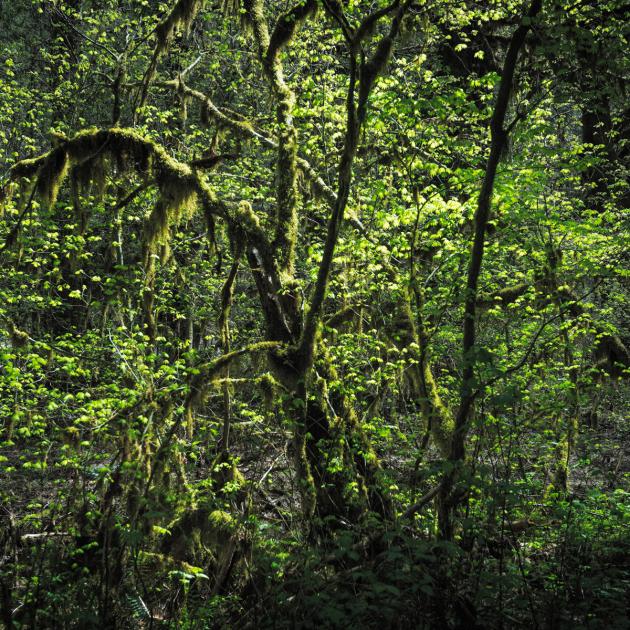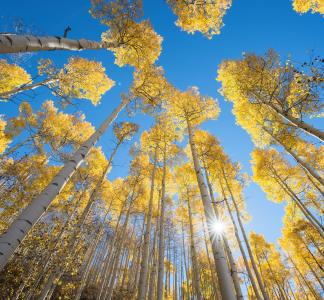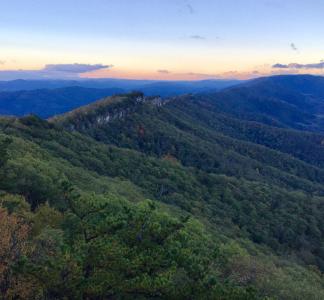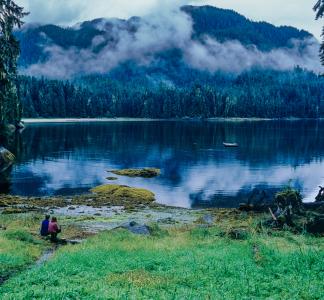New rule aims to escalate oil and gas drilling in our national forests

Santa Fe National Forest in New Mexico is among forests thought to be vulnerable under a new proposed rule
Mason Cummings, TWS
Change would handcuff Forest Service in pausing harmful projects
Under a proposal released on Sept. 1, the U.S. Forest Service would promote oil and gas drilling in national forests and grasslands, “decreas[ing] the burden on industry” by abdicating its long-standing responsibility to conserve habitat and outdoor recreation areas.
“This proposed rule puts the interests of the fossil fuel industry ahead of the public interest,” -Will Fadely, senior government relations representative for The Wilderness Society
The Forest Service and Bureau of Land Management (BLM) typically work together in managing oil and gas leases on national forests, with the Forest Service enjoying ultimate veto power if the likely environmental impacts of a given project are too high. The rule would cede Forest Service authority and, following the example of the fossil fuel-focused BLM, let drilling move forward quickly with little public input or consideration of pollution or other effects.
The rule comes with the U.S. still overwhelmed by the COVID-19 pandemic. It follows several other instances of the Department of the Interior and USDA, which contains the Forest Service, advancing environmental and land-use planning decisions while public attention is turned elsewhere.
“By undermining the public participation and environmental review required by the National Environmental Policy Act, this proposed rule puts the interests of the fossil fuel industry ahead of the public interest,” said Will Fadely, senior government relations representative for The Wilderness Society, in a statement.
It’s not hard to find illustrations of how the new proposal, and ramped-up fossil fuel development, might lead to degraded landscapes and ecosystems. Allegheny National Forest, in northwestern Pennsylvania, hosts more oil and gas production than any other national forest in the U.S. and its rugged tracts of old-growth hardwood are interspersed with more than a century’s worth of old (and often leaky) oil and gas wells—including 100,000 or more that may be abandoned.

Drilling and hydraulic fracturing on the Ashley National Forest in northeastern Utah were made possible by a joint U.S. Forest Service and Bureau of Land Management decision in 2012
WildEarth Guardians, Flickr
Conversely, in 2019, the supervisor of the Humboldt-Toiyabe National Forest in Nevada barred the BLM from issuing oil and gas leases in a specific area of the forest, partly due to concern over impacts on wildlife habitat and the traditional homeland of the Western Shoshone people. That move was hailed as a major victory for public lands; under the new rule, the Forest Service might not be able to stand in the way of such a drilling push.
Among national forests and grasslands thought to be especially vulnerable under the new rule are Beaverhead-Deerlodge National Forest in Montana and Santa Fe National Forest in New Mexico.
Forests a vital public health resource
Our national forests are a vital communal resource. They help ensure our air is breathable, filter pollutants from drinking water and even efficiently suck emissions that drive climate change from the atmosphere. But the new proposal, like others from the current administration, would fundamentally treat wildlands as just exploitable sources of a physical commodity.
Sneaking the rule out the door while people are focused on the COVID-19 crisis is doubly despicable; in the middle of a likely generation-defining wave of preventable death and suffering, the Interior Department has decided to prioritize weakening what amounts to a vital piece of public health infrastructure.
We can’t allow this proposal to move forward, least of all at a time like this. Please consider submitting a comment asking for key land management decisions like the proposed Forest Service rule to be halted immediately.






